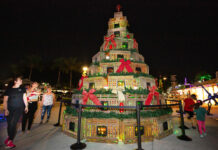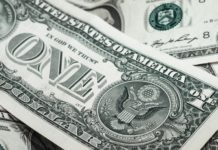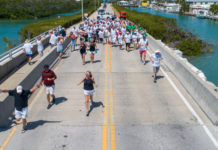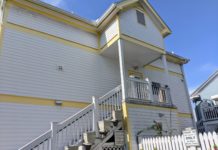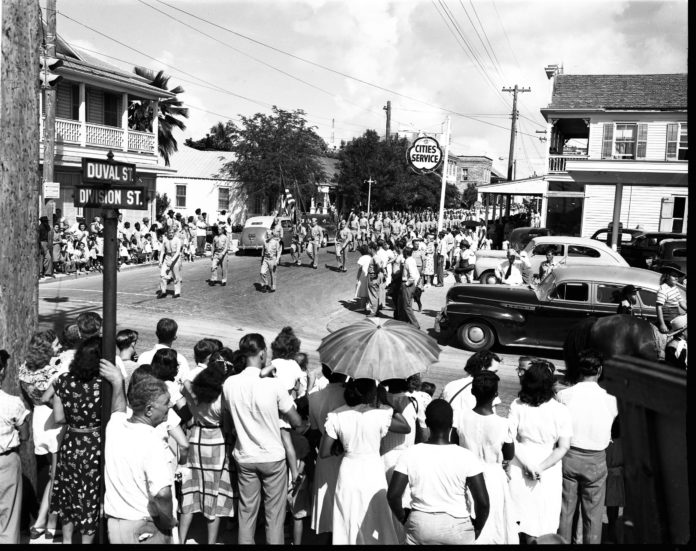
By Laura Albritton
More than 180 years ago, Duval Street could not claim to be Old Town’s central avenue. That honor went to another road, located west of Duval, which the 500 or so Key West residents at the time referred to as “Main Street.” In 1829, William Whitehead completed his famous survey of this island outpost, and changed the name Main Street to Whitehead Street. It was just as well. Duval Street, christened in honor of Florida’s then-territorial governor, was destined to become Key West’s de facto main street for much of the 19th and 20th centuries. These are the kind of intriguing details that I stumbled across as Keys historian Jerry Wilkinson and I were writing our new book, “Key West’s Duval Street.”
During the early years, a tidal pool covered a section of Duval; then, in 1846, a hurricane blew over the island and altered its topography. Eventually, with the underwater sections now filled in, Duval Street could stretch from “the Atlantic Ocean to the Gulf of Mexico,” and in the process, become one of the liveliest, most renowned streets in America. People showed up on Duval Street to imbibe spirits, to celebrate, and to congregate. One of the island’s first saloons, the Gem, was opened on Duval, and set the tone for decades to come. People also began to turn up for parades: in 1880, Civil War hero and former president Ulysses S. Grant rode down Duval in a horse-drawn carriage. Even former Confederate sympathizers came out to see the great man. Later, in 1892, Cuban revolutionary and poet Jose Marti would give an electrifying speech from a Duval balcony. One of Key West’s first hotels, the Russell House, hosted visitors here and even witnessed one of the island’s most notorious duels.
When the 20th century dawned, Duval Street could boast jewelry stores, coffee shops, a shooting gallery, multiple bars, and a barber. Parades regularly bustled up and down Duval Street, with soldiers, sailors and benevolent societies such as the Knights of Pythias joining in. When an elderly Henry Flagler at last arrived on his Overseas Railroad in 1912, militias and bands proudly marched along this avenue, with crowds eager to witness a slice of history. More history trumpeted down Duval in World War I and World War II, with plenty of patriotic parades. In the days of segregation, African-American children from Frederick Douglass High School proudly twirled batons and played their instruments along Duval on Armed Forces Day.
Meanwhile, Key Westers still came to Duval to shop for their children’s clothes and buy household appliances. People made their homes on Duval Street; they set up decorations for Christmas. Ordinary life took place just blocks away from bars and nightclubs. The street saw births, deaths, baptisms, graduations, artistic endeavors, local politicking, preparations for war and celebrations of peace. Yet the street could never be just another humdrum avenue. With its irrepressible spirit, Duval Street was, and remains, the pulsing heart of historic Key West, and a much-loved American destination.
Laura Albritton and Jerry Wilkinson will be signing copies of “Key West’s Duval Street” at Island Books on Friday, Dec. 15, from 5 to 7 p.m.
















